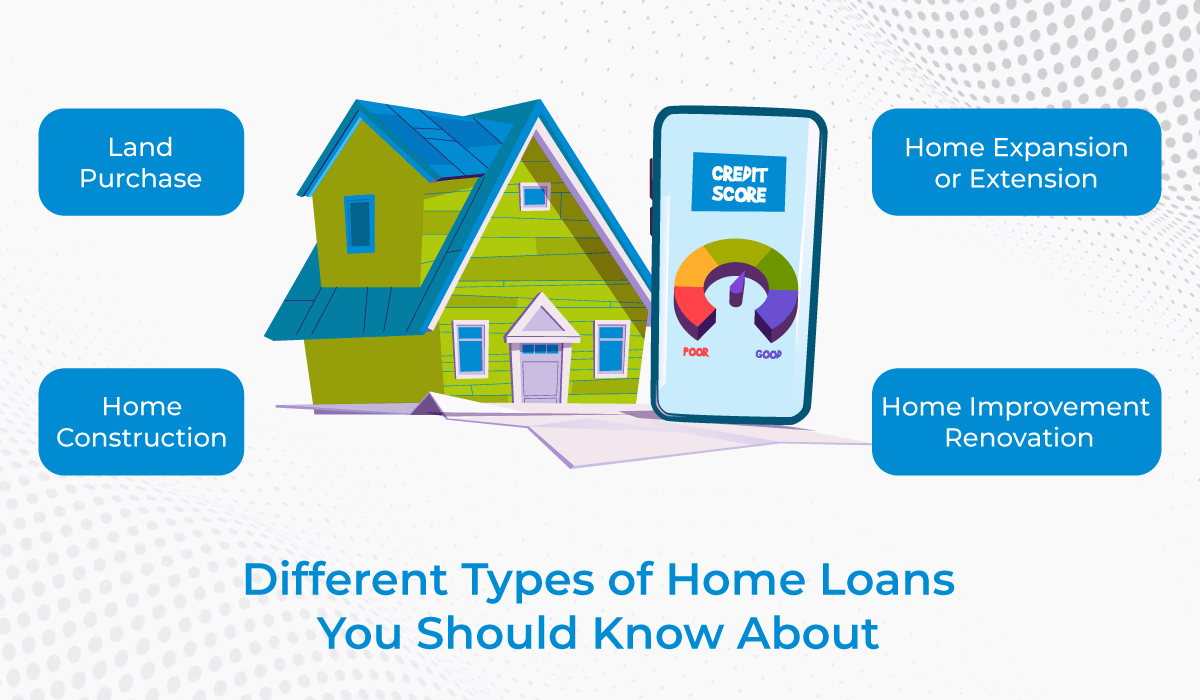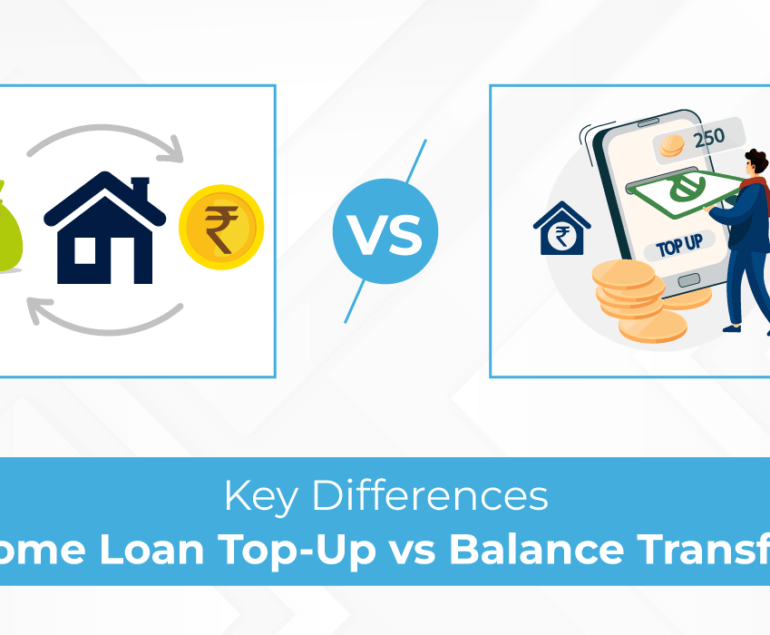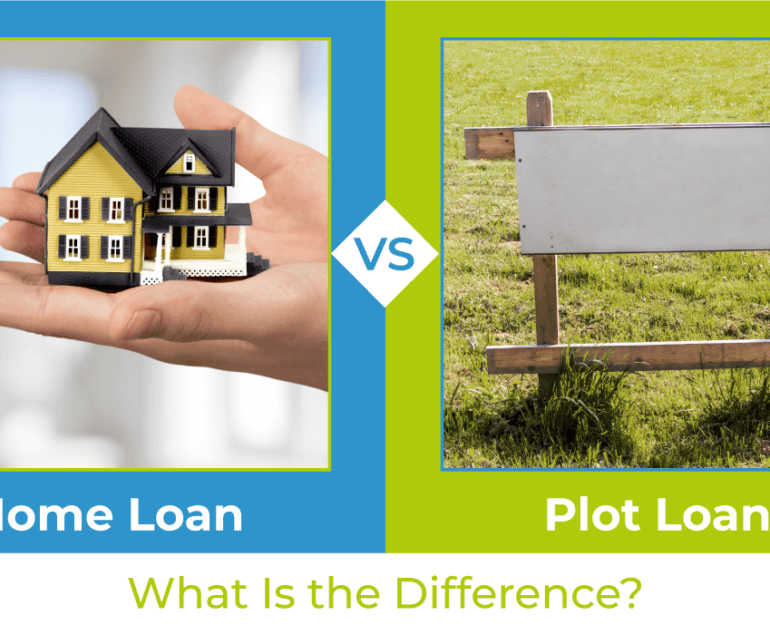Purchasing a house is one of the most expensive affairs we will ever undertake in our life. The rising property prices make it nearly impossible for a person to buy a house without a loan. A home loan is a financial tool used to purchase a house at a cheaper interest rate and as a tax deduction for the homeowner, making it an attractive option for prospective home buyers.
Home loans have become increasingly popular in India over the past decade. Several banks provide us with loans to buy the new home we have been dreaming of for a long time.
There are, of course, different housing loan types to help home buyers to get through all hurdles along the way to owning a home, and this article gives you an insight into nine housing loan types that can help home buyers.
Find the right Home Loan for you and your family!
Our expert support team will guide you through the process, from application to closing.
A] 9 Different Types of Home Loans in India
Though there are many home loans in India, here we have covered different types of home loans that you may find helpful.
1. Loan for Land Purchase
Land purchase loans are provided by financial institutions so that borrowers can purchase a plot for a house. When the property construction is completed, the taxpayer may take advantage of tax deductions on home loan providers in Mumbai.
As a general rule, most loan providers offer you 80-85% of the market value of the land as a loan subsidy, meaning that you have to pay the remaining 15-20% as a down payment on the loan.
Keep in mind, there’s a difference between Loan for Land Purchase and loan against property. Loan against property is taken for an already existing property.
Read more about Loan against property with our informative guide: Key Difference Between Home Loan and Loan Against Property
2. Home Purchase Loan
A new home can be financed with a home purchase loan. This is another type of home loan in India the process of which can start once you have determined your eligibility and ability to repay the loan.
To determine your repayment capacity, you will need to look at factors such as your overall monthly income and expenses and other factors such as your spouse’s income, assets and liabilities, stability of employment, and so on. With this type of financing, it is possible to borrow up to 80% of the market value of the residential property.
3. Loan for Home Construction
To obtain a home-construction loan, the individual must own or co-own a piece of land on which they intend to build a residential property. It is essential to understand that a financial institution’s ability to grant a loan, in this case, will depend on the construction cost estimate they can provide.
4. Home Expansion or Extension Loan
A home expansion is another type of home loan that is most useful when you don’t have funds and intend to expand your existing home by adding a new room or constructing a new floor. Home expansion loans, also known as home extension loans, are the kinds of loans required in such situations.
5. Home Improvement / Renovation Loan
Home improvement loans are available to homeowners who own a house but cannot afford to renovate it. During a renovation, the property may be repaired, walls may be painted, light fixtures may be installed, the house may be extended, and many other things.
A loan works like this: A borrower provides the lender with a cost estimate of the work that needs to be done, and then the lender takes a quote from the contractor to verify that the amount presented is accurate.
Immediately after receiving the money, it is released to the contractor, who is due the money at the rate of the construction work.
6. Home Conversion Loan
Home conversion loans can be used by individuals who already have loans on their homes but want to sell them and buy a new one. Borrowers can get a new home when choosing this housing credit because the existing loan can be transferred to the new property. There is no need to repay it or for another lender to repay it.
This type of loan, however, has a higher rate of interest than the others.
7. Home Loan for NRIs
This type of mortgage loan specifically targets non-resident Indian if they are looking to buy a residential property in India but are not Indian citizens. There is a difference between the application process and documentation for this type of home loan and the rest available in India. Despite this, this housing loan has a similar structure.
8. Bridge Loan
Buying new residential property by selling your old one is possible with a bridge loan, a short-term financing option. This loan amount can be utilized to finance the purchase of a new home until the old property can be sold. The duration of bridge loans is usually less than two years, and the interest rates are generally high.
9. Balance transfer home loan
Buyers can benefit from lower market interest rates by transferring their home loan balance to a balance transfer loan. The Reserve Bank of India insists that customers should be given lower interest rates when they transfer their balance to their new bank. Still, almost none of the Indian banks do so, making balance transfers a viable option for those looking to transfer their debt.
A customer switches his home loan to another bank for a lower rate with this loan. Buyers with existing loans can reduce their burden with a balance transfer.
B] Stamp Duty and Registration charges
To cover most of the home-buying expenses, you should choose a home loan sanction that is large enough. However, your home loan sanction does not include stamp duty or registration costs. As a result, save for these out-of-pocket expenses.
Apart from the purchase price, the process of buying a home involves a variety of costs. To complete your home purchase formalities, you must pay mandatory stamp duty, registration fees, and parking or maintenance fees.
States may charge anywhere from 7-10% of the property value for stamp duty and registration. A few states currently offer stamp duty concessions to women homebuyers, depending on government discretion.
Also Read: Key Differences: Home Loan Top-Up vs Balance Transfer
C] Benefits of Taking a Home Loan
The biggest liability is typically a home loan. Although the home loan is huge and has a long term, there are also some advantages. Take a look at the following to learn about the advantages of home loans.
Low-Interest Rates
House loans have lower interest rates than any other type of loan. For people who are financially burdened, a loan to supplement their current mortgage may be more affordable than a personal loan.
Low monthly Repayments
One of the undeniable benefits of taking a home loan is to enjoy the facility of low monthly repayments. A borrower can pay off monthly installments.
Due to the lower amount of cash one has to pay every month, it is easier to make monthly payments.
The period for the loan repayment is chosen, depending on a person’s age and how many years they have left before they are expected to retire.
Reclaiming Tax Deductions
Another major benefit of home loans is the ability to reclaim tax deductions. A mortgaged property repaid with interest and principal could qualify for a tax deduction. The maximum deduction for the principal repayment of home loans can be claimed under Section 80C. There is a limit of Rs. 1.5 lakh for such deductions.
The interest component of the repayment can be deducted under Section 24B.
Also Read: Understanding Tax Benefits on Home Loans & How to Claim Them
Find the right Home Loan for you and your family!
Our expert support team will guide you through the process, from application to closing.
Conclusion
There are various purposes for which banks provide home loans, in addition to purchasing houses. Hence, you must thoroughly understand the different types of home loans available in the Indian marketplace before applying for a mortgage.
If you are looking into loan advisors in Mumbai especially if you are considering applying for a home loan, we can help you through the process.




